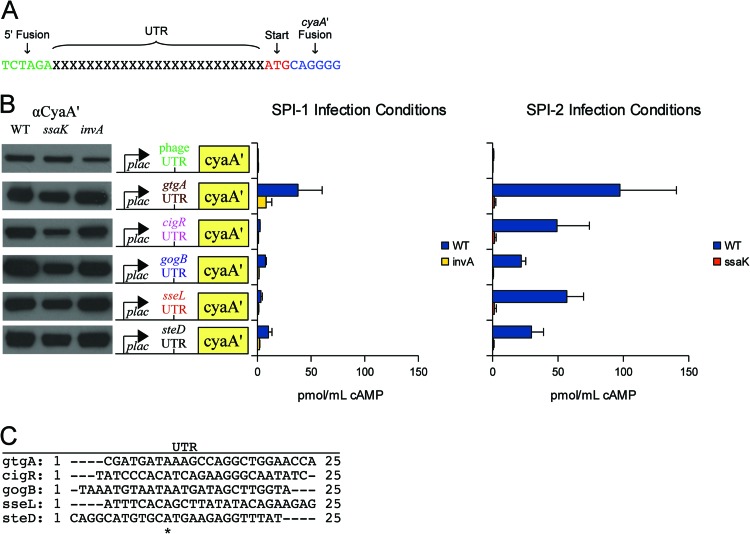Fig 1.
RNA leader sequences sufficient for CyaA′ translocation. (A) Construction of UTR::cyaA′ fusions. UTR fusions were designed to express CyaA′ without any amino acid sequence corresponding to a type III effector. Each UTR encodes a Shine-Dalgarno sequence required for ribosome binding and translation. (B) Translocated UTR::cyaA′ fusions. Forty-two effector UTRs were fused directly to cyaA′ and screened for injection into J774 macrophages. Five were found to be sufficient for CyaA′ translocation. The data are summarized here, and the complete data set is provided in Table S1 in the supplemental material. (Left) Western blots showing CyaA′ expression from LB cultures. Samples were normalized to an OD600, and ∼105 bacteria were loaded into each lane. (Middle) Construct map showing the plac promoter, which is constitutive in Salmonella, the UTR to initiate translation, and the CyaA′ reporter. (Right) Bacteria were induced for SPI-1 and SPI-2 expression and used to infect J774 macrophages. Translocation was evaluated by cAMP ELISA. The invA and ssaK mutants are functional SPI-1 and SPI-2 mutants, respectively (23). (C) ClustalX alignment of UTRs sufficient for CyaA′ translocation. *, aligned residues.

